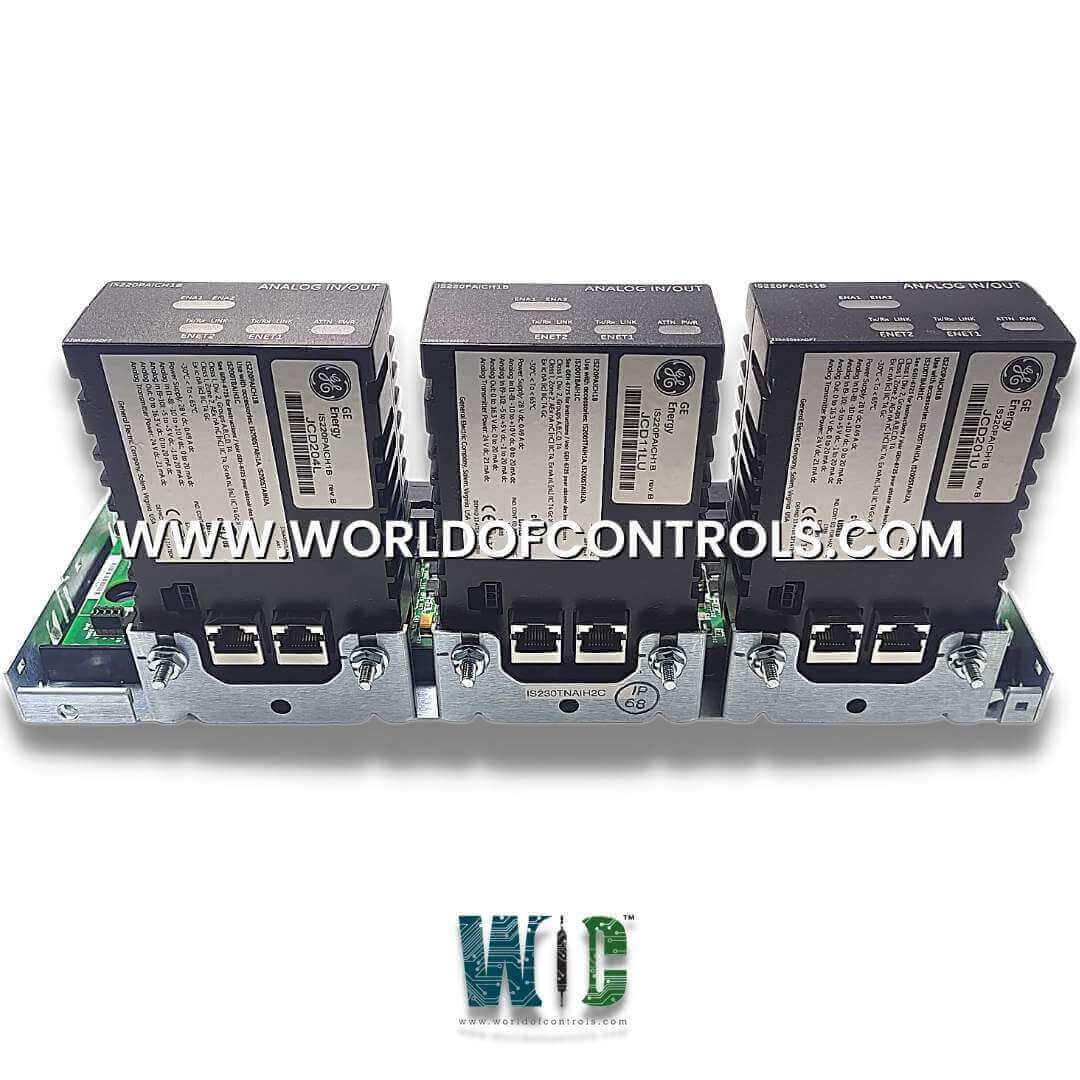
World Of Controls understands the criticality of your requirement and works towards reducing the lead time as much as possible.
IS230TNAIH1C - Analog I/O DIN-Rail Module is available in stock which ships the same day.
IS230TNAIH1C - Analog I/O DIN-Rail Module comes in UNUSED as well as REBUILT condition.
To avail our best deals for IS230TNAIH1C - Analog I/O DIN-Rail Module, contact us and we will get back to you within 24 hours.
Part Number: IS230TNAIH1C
Manufacturer: General Electric
Series: Mark VIe
Technology: DinRail-mount
Function: Analog I/O DIN-Rail Module
Availability: In Stock
Country of Manufacture: United States (USA)
IS230TNAIH1C is an Analog I/O DIN-Rail Module manufactured and designed by General Electric. It is a part of the Mark VIe Control System. The board includes advanced noise suppression circuitry to protect its inputs and outputs. The circuitry safeguards the module from electrical surges, which can be caused by phenomena such as lightning strikes or abrupt changes in the power supply. By absorbing and mitigating these surges, the module prevents potential damage and ensures stable operation. The module is designed to filter out high-frequency noise that can interfere with signal accuracy. This helps maintain the integrity of the signals being processed, preventing distortion or errors caused by electrical interference.
WOC is happy to assist you with any of your automation requirements. For pricing and availability on any parts and repairs, contact us.
What is IS230TNAIH1C?
It is an Analog I/O DIN-Rail Module manufactured and designed by General Electric
Can the board connect through cables or directly to the electronics?
Yes, the module can interface with other system components either through cables or directly to the electronics. This flexibility allows for integration into various system architectures and configurations.
How does the TMR configuration work for input signals?
In a TMR configuration, input signals are distributed (fanned) across the three connectors designated for R, S, and T controls. This ensures redundancy and reliability by providing multiple paths for signal transmission.
How are output signals managed in a TMR configuration?
For TMR output connections, the module combines the currents from the three connected output drivers. The electronics regulate this total current to match the commanded setpoint, ensuring consistent and reliable output signals.